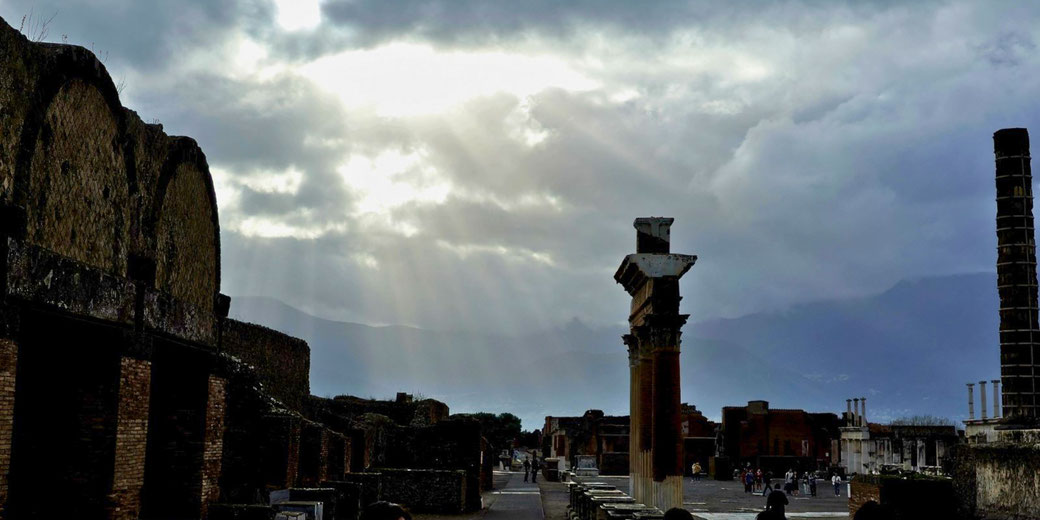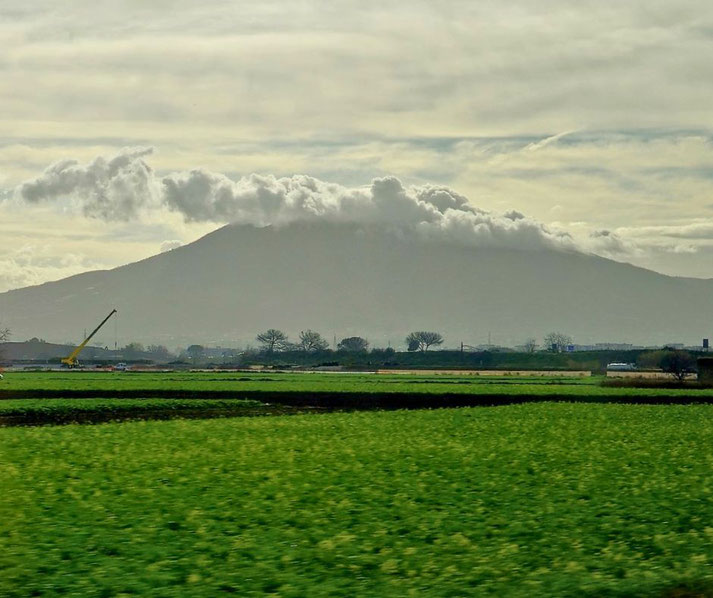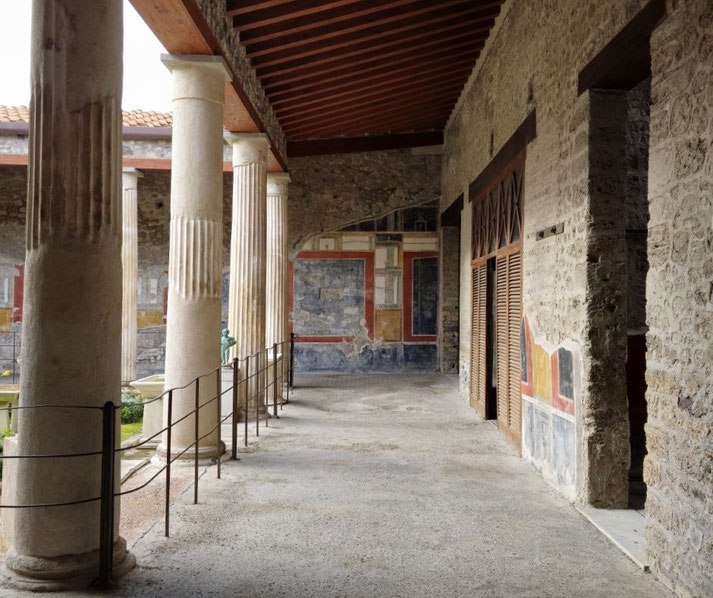What if we've been wrong about the date Mount Vesuvius erupted in AD 79?

For centuries, the eruption that buried Pompeii and Herculaneum has traditionally been dated to 24 August 79 CE. This comes from the most detailed ancient account of the disaster, which are two letters written by Pliny the Younger to the historian Tacitus some decades after the event.
In one letter, Pliny explicitly describes the eruption as beginning on “the ninth day before the Kalends of September,” which is the 24th of August in the Roman calendar.
The medieval copies of Pliny’s letters repeat this date, and it became the canonical entry in history books. For example, a 9th-century manuscript Codex Laurentianus clearly records "nonum kal. Septembres” (24 August) as the day of the eruption.
As a result, ancient and modern authors long accepted Pliny’s testimony. Early historians like Cassius Dio, who was writing over a century later, noted the eruption occurred “in autumn”.
However, in the Roman world, autumn was considered to begin in early August, so this does not necessarily contradict an August 24 date.
Only in the late 18th century did doubts emerge, when some readers of Pliny’s text noticed variant manuscript readings suggesting different dates.
In fact, a few Renaissance-era copies of the letters gave dates in November or left the month unclear.
Nonetheless, throughout most of the 20th century the 24 August 79 CE date remained essentially unchallenged in the scholarly literature.
It was even remarked that the eruption strikingly fell just after the Roman festival of Vulcan on the 23rd of August.

The most recent archaeological and scientific evidence
In recent decades, a growing body of archaeological and scientific findings has called the August date into question by suggesting that the eruption may have occurred later in the year: likely in mid-autumn of 79 CE rather than in high summer.
Why did they believe this? There are a number of pieces of evidence that has accumulated.
Firstly, excavations have uncovered the remains of fruits, nuts, and agricultural produce that typically would be harvested in the autumn, not summer.
For instance, carbonised pomegranates, walnuts, and even chestnuts have been found in the ash deposits.
Also, large jars of wine were discovered still sealed and stored, indicating the wine-making season of the late summer grape harvest was underway or just completed at the time of burial.
This is difficult to reconcile with an eruption in late August, before those crops are usually ripe or harvested.
Another problem comes from the plaster casts of Vesuvius’s victims which show some were wearing heavy clothing, such as long-sleeved tunics or cloaks, as they died.
Furthermore, archaeologists have found charcoal brazier heaters inside houses.
These suggest that there was much cooler weather at the time of the disaster that would be more consistent with October’s mild autumn temperatures than August’s summer heat.
By contrast, in the height of August in southern Italy, people would not ordinarily need warm garments or indoor heating.
Another, more technical, concern was raised by the geophysical studies of the volcanic ash distribution of pumice and ash to the southeast of Vesuvius, in the direction of Pompeii.
The pattern aligns with the prevailing high-altitude winds in the region during the autumn months.
This is because, in summer, winds in Campania typically blow in the opposite direction, from the southwest or west.
It would have driven ash away from Pompeii.
Among the city's ruins, a single Roman coin has been found that appears to have been minted shortly after August had begun.
The coin bears an inscription celebrating Emperor Titus as imperator for the 15th time, whereas official records from early September 79 CE still list him as imperator for the 14th time.
This implies the coin was issued in the autumn of 79. Its presence in Pompeii’s wreckage suggests that the city was still inhabited and participating in the empire’s currency circulation beyond August.
However, this alone is not a definitive ‘smoking gun’, since experts debate the coin’s exact minting date.
Perhaps the most striking discovery is a handwritten charcoal inscription unearthed on an interior wall during new excavations in Pompeii’s Regio V. The brief Latin graffito is dated “XVI K(alendas) Nov(embris)”, meaning “the 16th day before the Kalends of November”.
That would be the 17th of October by modern reckoning. Also, because the writing was done in charcoal, which is a fragile, easily erasable substance, archaeologists believe it was likely written shortly before the eruption and not long before being buried by ash.
The inscription even contains a casual note about food: “he indulged in immoderate food”.
This is apparently a jaoke made by a worker remodeling the house.

When viewed together, these archaeological and scientific clues build a strong case that the final cataclysm occurred in the autumn of 79 CE, most likely in October.
As a result, excavators and researchers have increasingly agreed on a revised date of around 24–25 October 79 CE for the eruption.
Obviously, this is about two months later than the long-accepted August 24 date.
In 2018, the director of the Pompeii archaeological site admitted that “with much humility, perhaps we will rewrite the history books”.
A comprehensive multidisciplinary study in 2022 likewise concluded that 24–25 October 79 CE is the most likely timing.
But things aren’t always as they seem...
Despite the new findings, there are scholars and experts who defend or see merit in retaining 24 August 79 CE as the eruption date.
Their arguments emphasise the fact that Pliny the Younger is our only contemporary witness.
Textual critics specifically point out that the earliest and most reliable manuscripts of Pliny’s letters uniformly record the August date.
Later ‘alternate’ dates like October or November only appear in much later or inferior copies, likely as medieval transcription errors.
In other words, to reject the traditional date, we must assume either Pliny misremembered the date when writing around 25 years later, or that all the best manuscripts are wrong.
Unless incontrovertible evidence dictates otherwise, they argue, the word of an educated eyewitness should carry significant weight.
What about Cassius Dio’s account? Is important to note that he states that the eruption happened in ‘autumn’.
Defenders of the August date stress that the Roman definition of autumn began in early August.
Therefore, Dio’s testimony isn’t necessarily pointing to October: it could well include late August.
Also, there may be some questions of the charcoal inscription’s timing. The October 17 date is not absolutely definitive.
First of all, it does not include a year, so conceivably it could have been written in a previous year (October 78 CE, for example) and simply happened to survive until 79 CE.
Charcoal markings, even though they are fragile, can sometimes last longer than a few months, even for over a year in protected conditions.
So, some argue the graffito might not necessarily pin the eruption to October 79.
The excavators themselves acknowledged this possibility, even if they considered it unlikely.
Without an accompanying year or context, the graffito, by itself, cannot categorically falsify the August date.
Also, many of the ‘autumnal’ finds can be explained in other ways. Yes, pomegranates and walnuts are typically harvested in autumn, but it’s possible these were late-season varieties or preserved stores from the previous year.
Also, ancient agricultural cycles and climate conditions might not exactly match modern expectations, so today’s seasonal assumptions might mislead us.
Likewise, the chestnuts found at Pompeii could have been imported from elsewhere or gathered early, especially if climate or species differences allowed earlier ripening in the 1st century.
As such, we shouldn’t automatically project modern growing seasons onto the past.
Importantly, the presence of heavy clothing and braziers in the ruins is not an unequivocal timestamp of season.
This is because people fleeing an eruption might have put on cloaks or blankets for protection against falling ash and debris, regardless of the warm weather.
Braziers found in homes could have been used for creating light, for cooking since cooking with charcoal was common year-round, even in summer.
As a result, these items are not incontrovertible proof of cool weather. They could be circumstantial or coincidental, and their presence can be interpreted in multiple ways.
There is also a curious suggestion based upon garum, an important kind of fish sauce.
Analysis of a batch of garum by researchers found it was made predominantly from a species of fish known as the bogue that was caught in large numbers during the summer months.
This suggests the sauce was freshly prepared in the summer of 79 CE and was still in the process of fermentation when the city was buried.
Proponents of the August date argue that if Pompeii had been destroyed in late October, the timing for producing this sauce is consistent with an eruption coming on the heels of the prime fishing season in late August.
If anything, the debate over the date of Vesuvius’s eruption in 79 CE highlights the ongoing contestability of historical research.
What do you need help with?
Download ready-to-use digital learning resources
Copyright © History Skills 2014-2025.
Contact via email
With the exception of links to external sites, some historical sources and extracts from specific publications, all content on this website is copyrighted by History Skills. This content may not be copied, republished or redistributed without written permission from the website creator. Please use the Contact page to obtain relevant permission.





